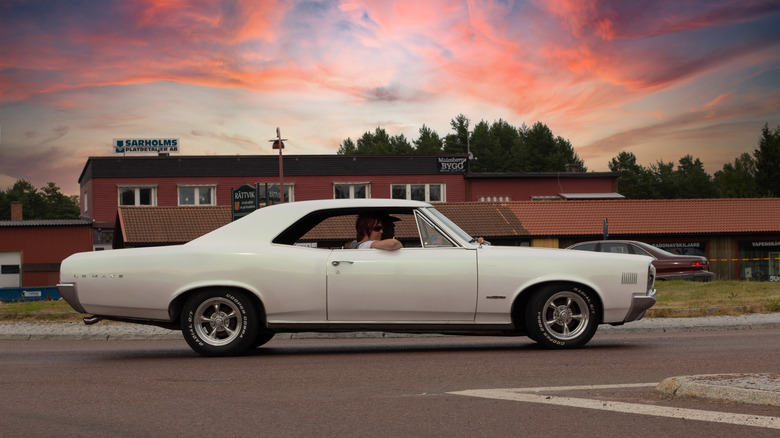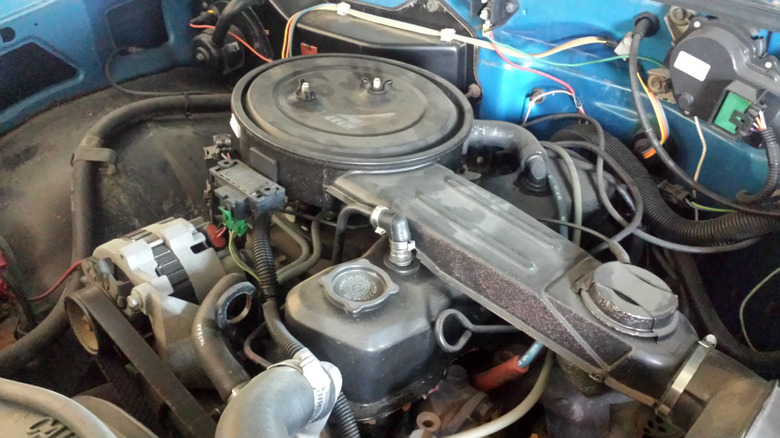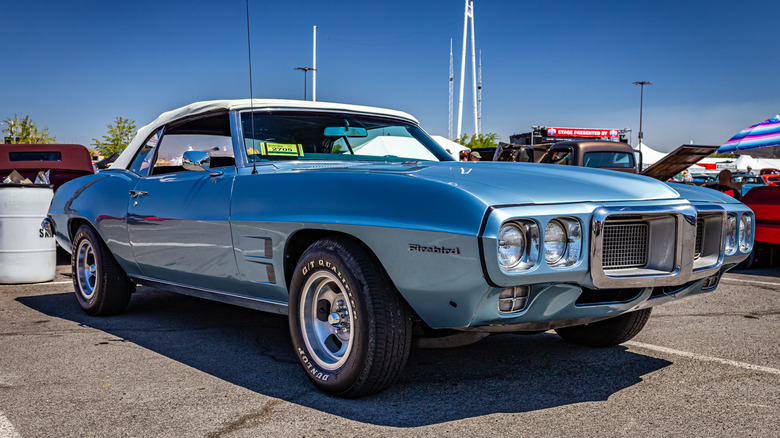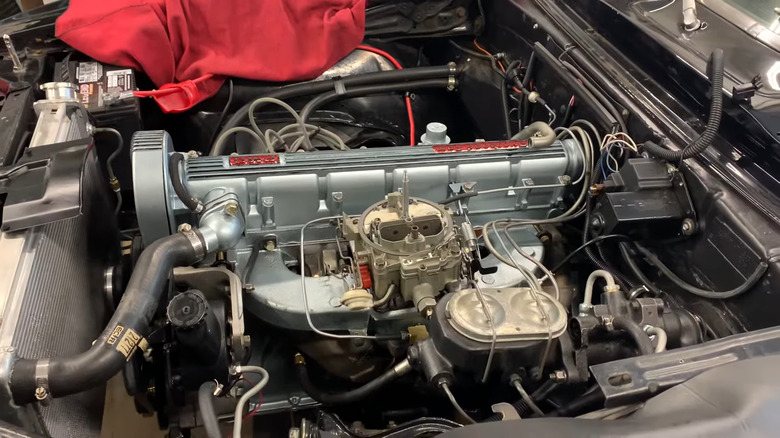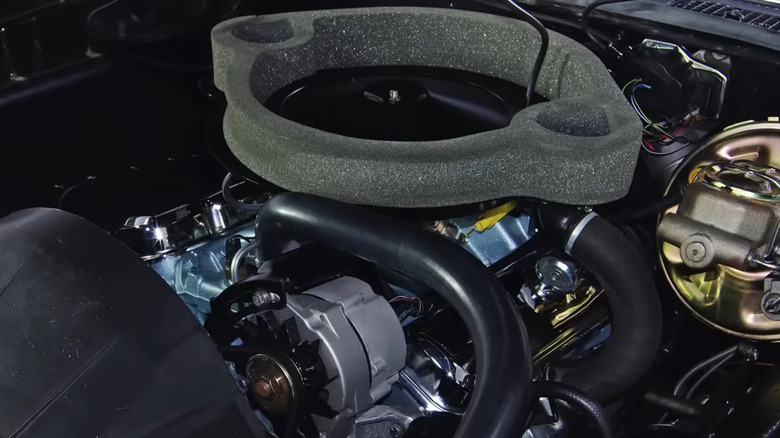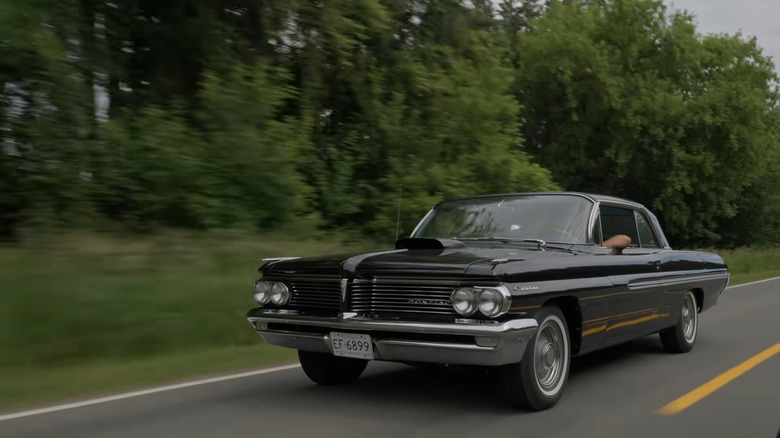5 Underrated Engines That Powered Pontiac's Coolest Vehicles
Pontiac has made some really cool cars over the years, such as the GTO, Bonneville, and Firebird. But while there are many underappreciated Pontiac muscle cars, when people talk about what makes Pontiacs so special, they often focus on just a few engines, forgetting about other great ones.
So, why don't these engines get the attention they deserve? Well, sometimes people are more interested in the most famous engines or the cars that are considered the best. Other times, the engines were so advanced or different when they came out that people didn't notice how good they were. Also, because Pontiac made so many engines, it's easy for some to not get noticed. Regardless of the reason, there's no denying that some of these underrated engines have played a big part in making Pontiac cars exciting to drive and own. Here are five engines that powered some of the best-looking Pontiacs that we think deserve the occasional spotlight.
Pontiac Iron Duke/Tech IV
Originally launched in 1977, this 2.5-liter inline-four engine, with its cast iron construction, was at the center of various GM models until 1993. According to Engine Builder magazine, It was one of GM's first engines to use all-metric fasteners.
By all accounts, the Iron Duke had a simple design, but the specs were pretty impressive. With a bore and stroke of 4 inches and 3 inches, it initially had a compression ratio of 8.25:1, suitable for running on 87-octane fuel. Notably, the engine also underwent several improvements over its lifespan, including the introduction of throttle body injection in 1982, which gave it the Tech IV moniker. These advancements resulted in a peak output of 110 horsepower by the late 1980s.
Besides Pontiacs like the Astre, Phoenix, and Grand Am, GM also used the Iron Duke/Tech IV in some cool cars, like the Pontiac Firebird and the Fiero. Ironically, this gave the Iron Duke a bad reputation. The cars looked sporty, but the engine didn't match up. So, in the end, conversations about the Duke got drowned by the more powerful engines.
There was, however, an interesting chapter in the Iron Duke's story — its time in motorsports. Pontiac's Super Duty division engineered a racing variant of the Iron Duke that participated in IMSA GT and low-level NASCAR, which could produce over 230 horsepower. It shows that with some changes, the Iron Duke could have done a lot more than what it was originally designed for.
Pontiac 350 HO
The 350 was introduced in 1968 to replace the 326 engine, but it's the 350 H.O. (the high-performance variant) that was the real hidden gem. Despite its smaller size, it packed a significant punch. Technically, the 350 H.O. engine was a pretty genius for its time, delivering 320 horsepower, thanks to a high-performance camshaft similar to the one from the 400 H.O., improved exhaust gas scavenging, and refined carburetion. It also featured a 10.5:1 compression ratio, a four-barrel Rochester carburetor, and produced 380 lb-ft of torque.
In 1969, the 350 H.O. engine, delivering 325 horsepower, was offered in some of Pontiac's most iconic models, such as the Tempest, Firebird, and Le Mans. However, real-world tests often showed it producing over 350 horsepower as well. This made it one of the most potent engines for its size during that period.
Despite these impressive specs, the engine and vehicles it powered were not as widely recognized as some of their contemporaries, possibly due to the overshadowing presence of other high-profile engines and models during that era. These engines weren't even produced much, either. Remember that this was a time of intense competition during the muscle car era, where numerous models vied for the spotlight. Fortunately, the 350 H.O. is not completely removed from memory. It is slowly gaining popularity today because of renewed interest in Pontiac muscle cars like the Firebird.
Pontiac OHC Sprint Six
In the early 1960s, Pontiac decided to explore new engineering avenues, creating a unique overhead cam (OHC) engine. Combining this with the influence of European manufacturers, Pontiac engineers developed an engine that was not your typical American V8 of the era. Enter the OHC Sprint Six.
The Sprint Six had several tech specs and unique features that set it apart from the get-go. With a displacement of 230 cubic inches initially and later increased to 250 cubic inches, it featured a single-overhead-cam top end, a die-cast aluminum cam cover, and a novel fiberglass-reinforced toothed timing belt. In its Sprint form, the engine offered a high compression ratio, a four-barrel Quadrajet carburetor, and an up to 230 horsepower output.
It could hold its own against small-block V8s, surprising many with its capabilities. Reliability was another strong point — the engine had externally mounted oil and fuel pump drives that made it easier to maintain.
The Sprint Six found its home in various cool Pontiac cars, including the 1966-1969 Tempest, LeMans, and the 1967 – 1969 Firebirds. Unfortunately, facing the same fate as most decent powertrains at the time, which were in the shadow of the more popular V8 engines, the Sprint Six quickly became an underrated gem. Ultimately, the OHC Sprint Six engine is a part of car history, showing how trying new things can lead to some cool results. It might not have been the biggest or loudest, but it had its own cool.
1969-1970 Ram Air III 400
The Pontiac 1969 – 1970 Ram Air III 400 engine is perhaps less celebrated than its Ram Air IV counterpart — but it deserves praise not just in Pontiac's lineup but in the broader context of the American car industry's history.
The Ram Air III is a powerful engine with a 4.120-inch bore and a 3.75-inch stroke, typical of Pontiac's 400 V8s, but the D-port heads distinguish this model. Unlike the round-port heads used in the Ram Air II and IV, the D-port design made the engine's airflow and power output efficient. Despite its official rating of 335 to 366 horsepower, depending on the vehicle, experts argue that the true power output was much closer to 400 horsepower.
This engine was as practical as it was powerful. The choice of a cast iron intake over the more expensive aluminum option and the use of D-port heads made the Ram Air III a more economically viable option for both Pontiac and consumers, which meant near-top-tier performance without the top-tier price. The transition to the Ram Air IV in 1970 involved further refinements, but the Ram Air III remained a critical player, giving a substantial percentage of the IV's power at a reduced cost.
The Ram Air III 400's performance in vehicles like the 1969 – 1970 GTO Judge and the Trans Am was commendable, but the engine's technical merits often flew under the radar, overshadowed by the more aggressively marketed Ram Air IV.
Pontiac 421 Super Duty
Developed during a time when manufacturers were embroiled in a fierce horsepower war, the 421 Super Duty was Pontiac's answer to the escalating demands for greater power and speed. There were several things that made the Pontiac 421 Super Duty engine so impressive.
It had a heavy-duty cast iron core and was built with some of the best materials available. Besides strong parts, the engine also had a clever design. It had two four-barrel carburetors that helped it breathe better and get more power. The engine's heads were designed for high performance, making it even more powerful. Even though Pontiac said it was 405 horsepower, some tests found it around 460. That's a lot of power for a car engine.
Pontiac really just put together the best pieces in the best way to make the car go fast. And it worked — the 421 Super Duty was a beast. The engine was central to Pontiac's dominance in NASCAR and drag racing. The Catalina, equipped with this engine, became quite well known for its acceleration and top speeds. However, the 421's aggressive tuning and focus on performance meant it was not the most user-friendly engine for everyday driving. Its maintenance requirements and operational quirks, such as a high minimum idle speed and sensitivity to cold weather, meant it was more for enthusiasts or racers. Eventually, the 421 became decreasingly talked about — only occasionally coming up in conversations about Pontiac's racing pedigree.
